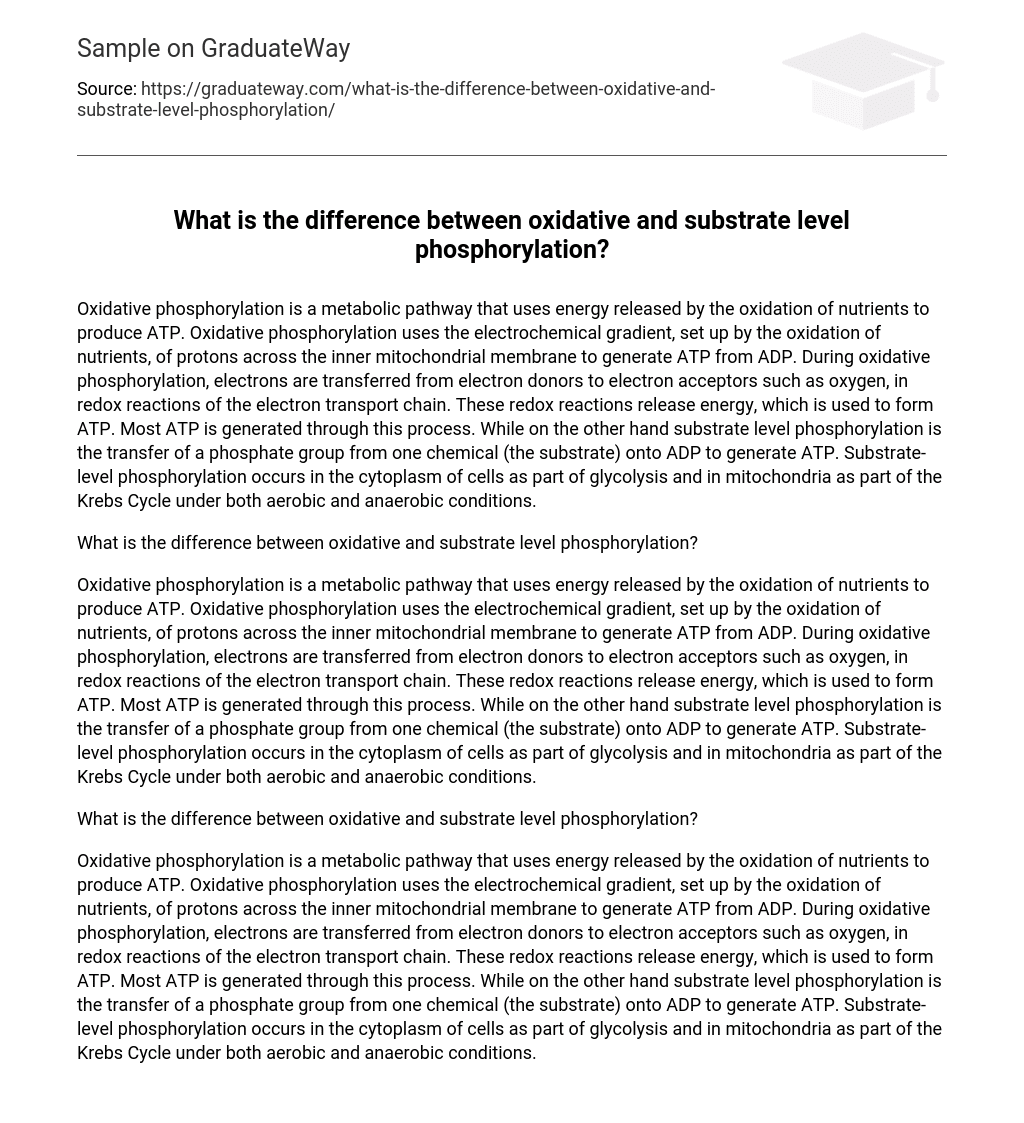Oxidative phosphorylation is a metabolic pathway that uses energy released by the oxidation of nutrients to produce ATP. Oxidative phosphorylation uses the electrochemical gradient, set up by the oxidation of nutrients, of protons across the inner mitochondrial membrane to generate ATP from ADP. During oxidative phosphorylation, electrons are transferred from electron donors to electron acceptors such as oxygen, in redox reactions of the electron transport chain. These redox reactions release energy, which is used to form ATP. Most ATP is generated through this process. While on the other hand substrate level phosphorylation is the transfer of a phosphate group from one chemical (the substrate) onto ADP to generate ATP. Substrate-level phosphorylation occurs in the cytoplasm of cells as part of glycolysis and in mitochondria as part of the Krebs Cycle under both aerobic and anaerobic conditions.
What is the difference between oxidative and substrate level phosphorylation?
Oxidative phosphorylation is a metabolic pathway that uses energy released by the oxidation of nutrients to produce ATP. Oxidative phosphorylation uses the electrochemical gradient, set up by the oxidation of nutrients, of protons across the inner mitochondrial membrane to generate ATP from ADP. During oxidative phosphorylation, electrons are transferred from electron donors to electron acceptors such as oxygen, in redox reactions of the electron transport chain. These redox reactions release energy, which is used to form ATP. Most ATP is generated through this process. While on the other hand substrate level phosphorylation is the transfer of a phosphate group from one chemical (the substrate) onto ADP to generate ATP. Substrate-level phosphorylation occurs in the cytoplasm of cells as part of glycolysis and in mitochondria as part of the Krebs Cycle under both aerobic and anaerobic conditions.
What is the difference between oxidative and substrate level phosphorylation?
Oxidative phosphorylation is a metabolic pathway that uses energy released by the oxidation of nutrients to produce ATP. Oxidative phosphorylation uses the electrochemical gradient, set up by the oxidation of nutrients, of protons across the inner mitochondrial membrane to generate ATP from ADP. During oxidative phosphorylation, electrons are transferred from electron donors to electron acceptors such as oxygen, in redox reactions of the electron transport chain. These redox reactions release energy, which is used to form ATP. Most ATP is generated through this process. While on the other hand substrate level phosphorylation is the transfer of a phosphate group from one chemical (the substrate) onto ADP to generate ATP. Substrate-level phosphorylation occurs in the cytoplasm of cells as part of glycolysis and in mitochondria as part of the Krebs Cycle under both aerobic and anaerobic conditions.





